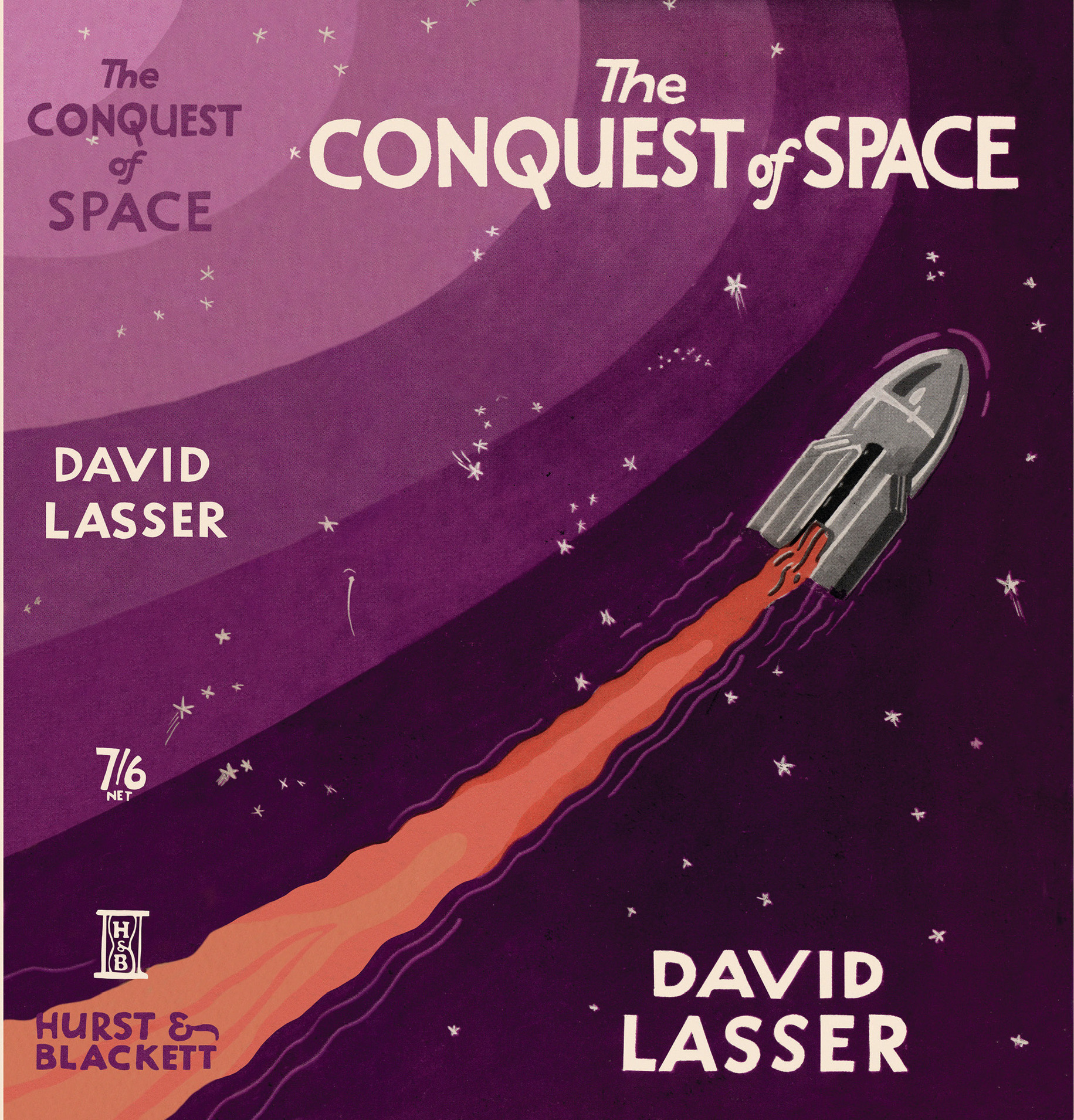
Teenage Arthur C. Clarke’s interest in the possibility of human space flight was launched by the colorful dust jacket of the British edition of The Conquest of Space, which he glimpsed in a bookstore window.
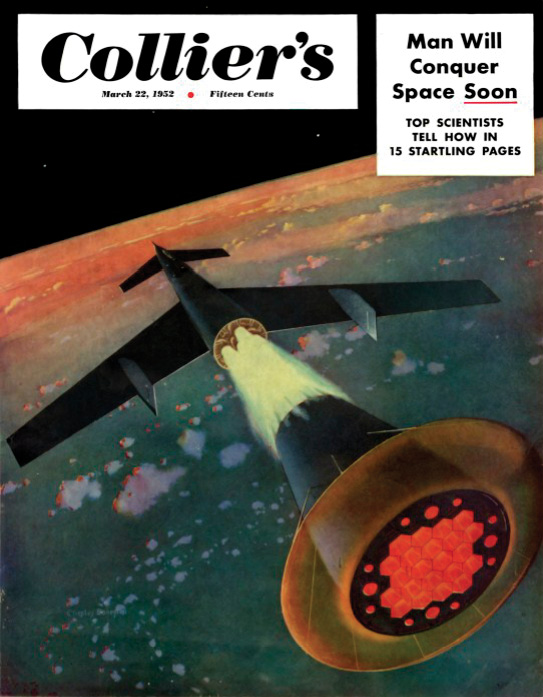
Chesley Bonestell’s illustration showing the ignition of the third stage of a ferry rocket forty miles above the Pacific Ocean appeared on the cover of the first space-themed issue of Collier’s magazine in March 1952.
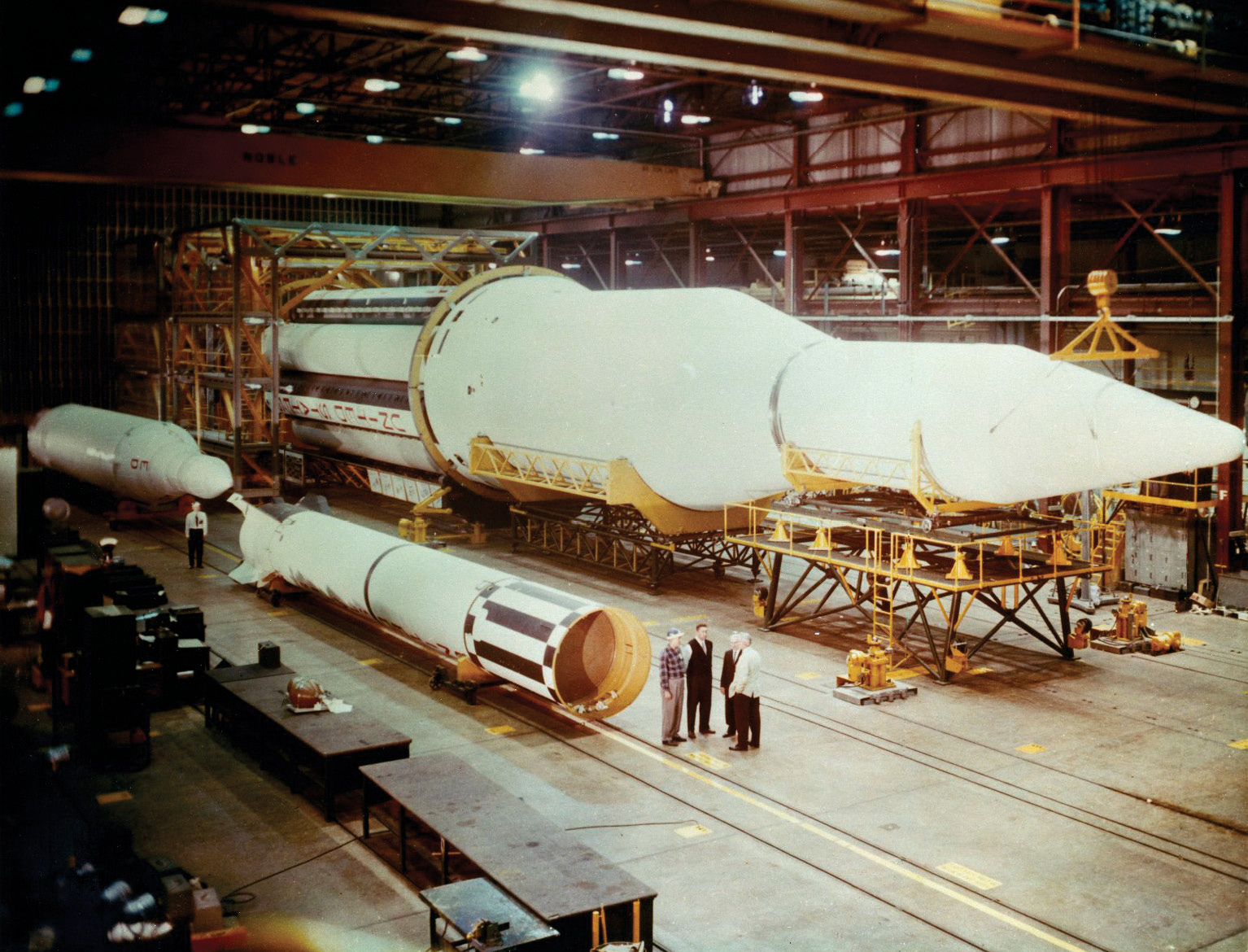
Wernher von Braun’s large Saturn C-1 rocket under construction at the Marshall Space Flight Center in 1961. In the foreground is a Redstone rocket used to launch the suborbital Mercury missions; behind it is the Jupiter rocket.
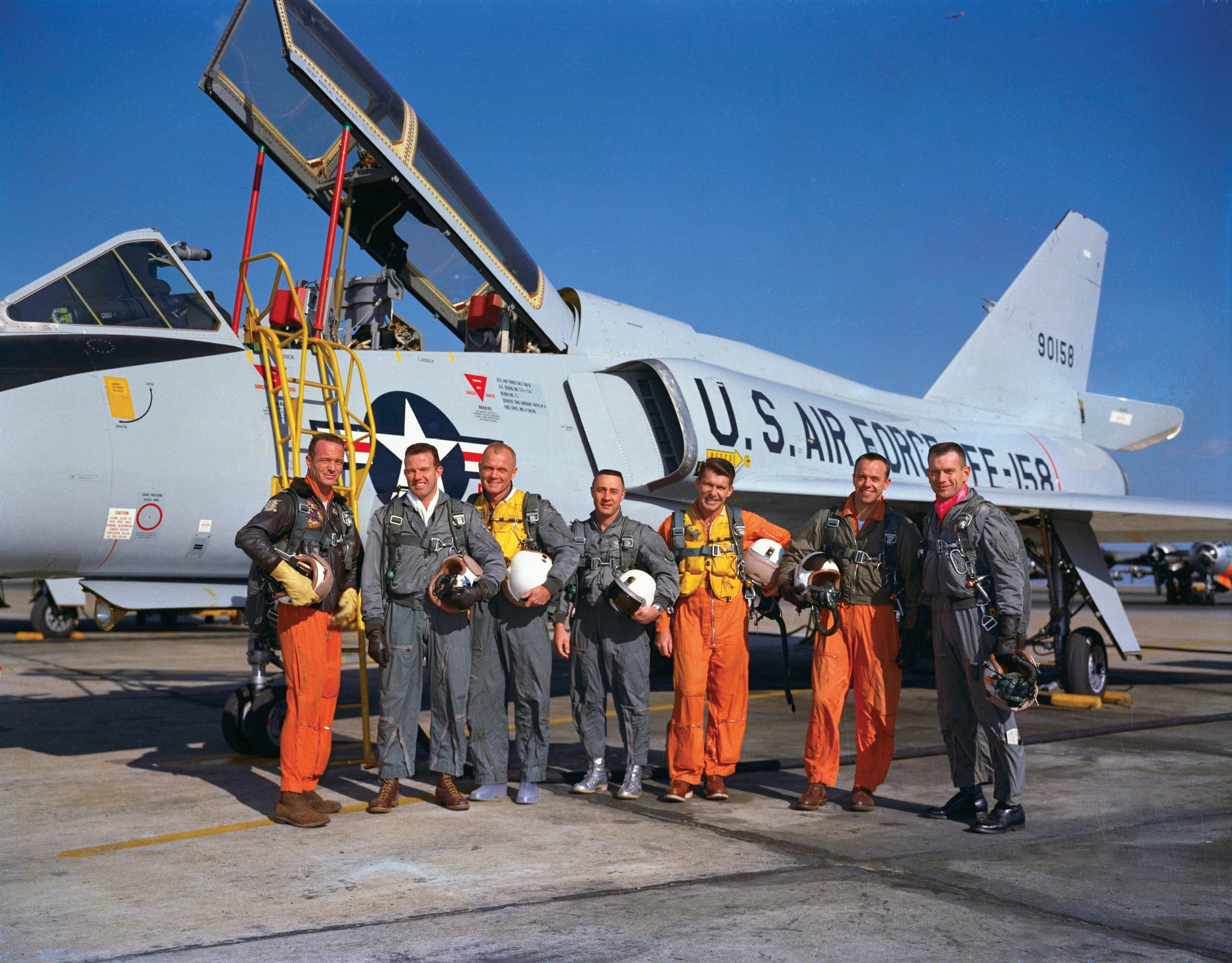
The seven Mercury astronauts pose in alphabetical order beside a Convair F-106B Delta Dart: Scott Carpenter, Gordon Cooper, John Glenn, Gus Grissom, Wally Schirra, Alan Shepard, and Deke Slayton.
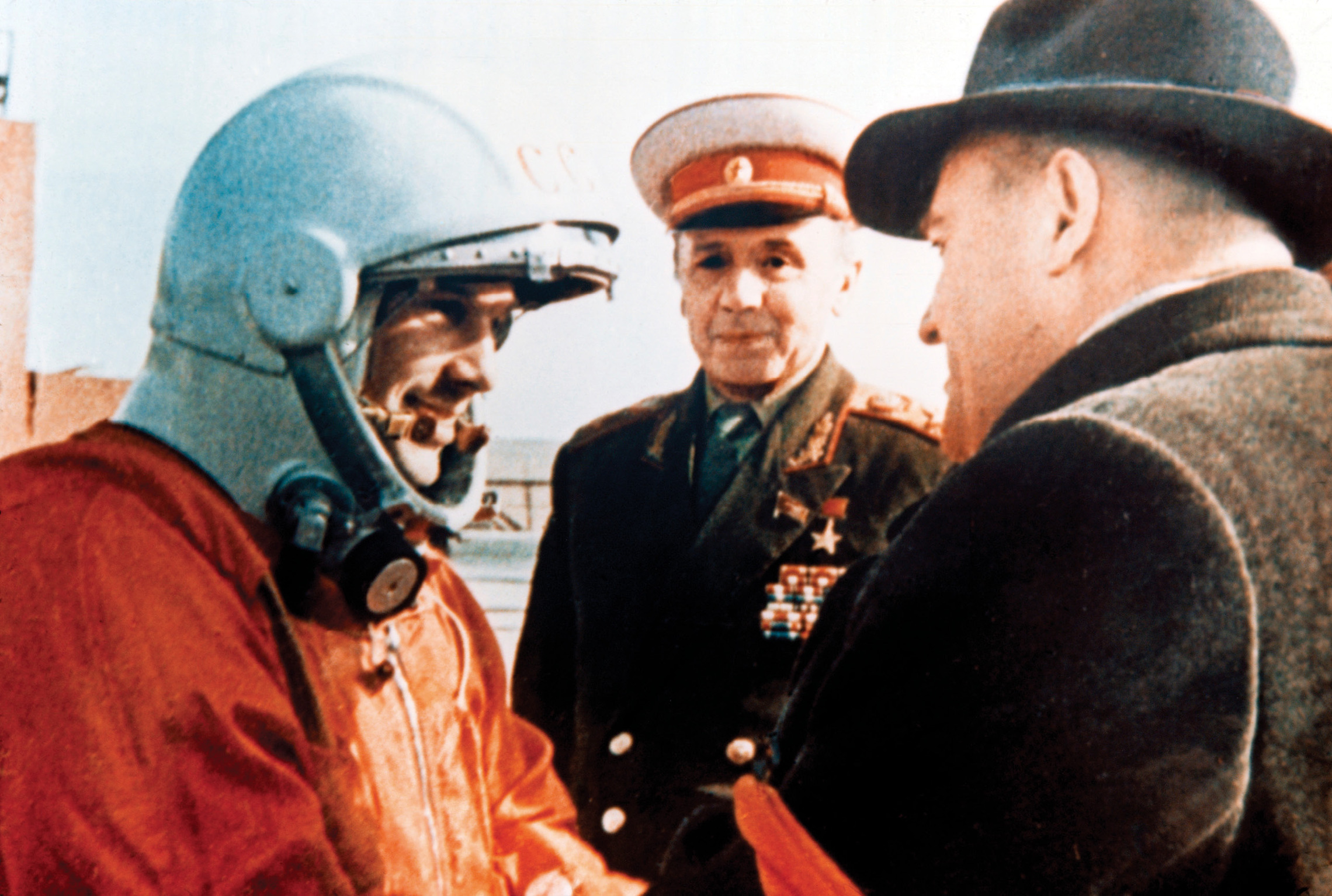
Wernher von Braun’s Soviet counterpart was engineer and spacecraft designer Sergei Korolev, shown here on the right wishing cosmonaut Yuri Gagarin a successful flight prior to the launch of Voskok 1 on April 12, 1961.
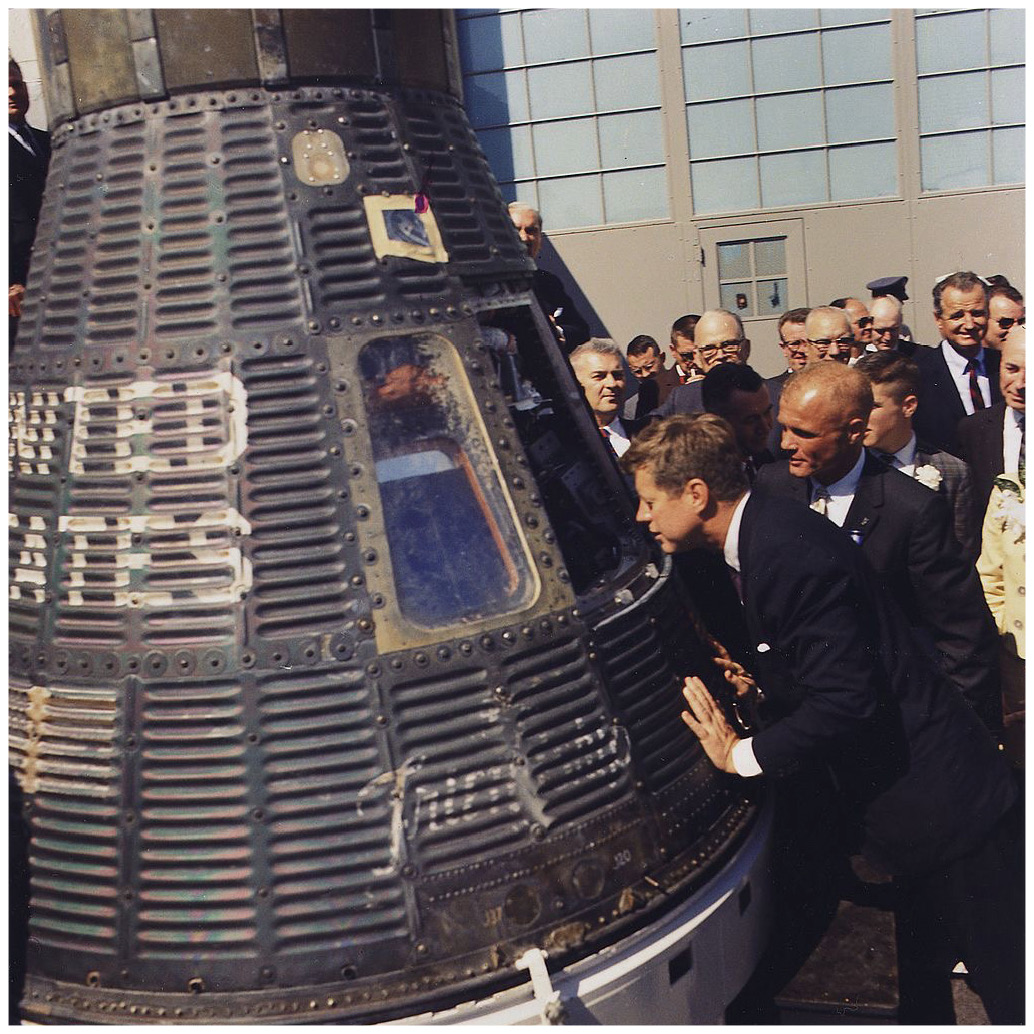
Two days after he became the first American to orbit the Earth, astronaut John Glenn shows President John F. Kennedy his Friendship 7 capsule outside Hangar S at Cape Canaveral Air Force Station.
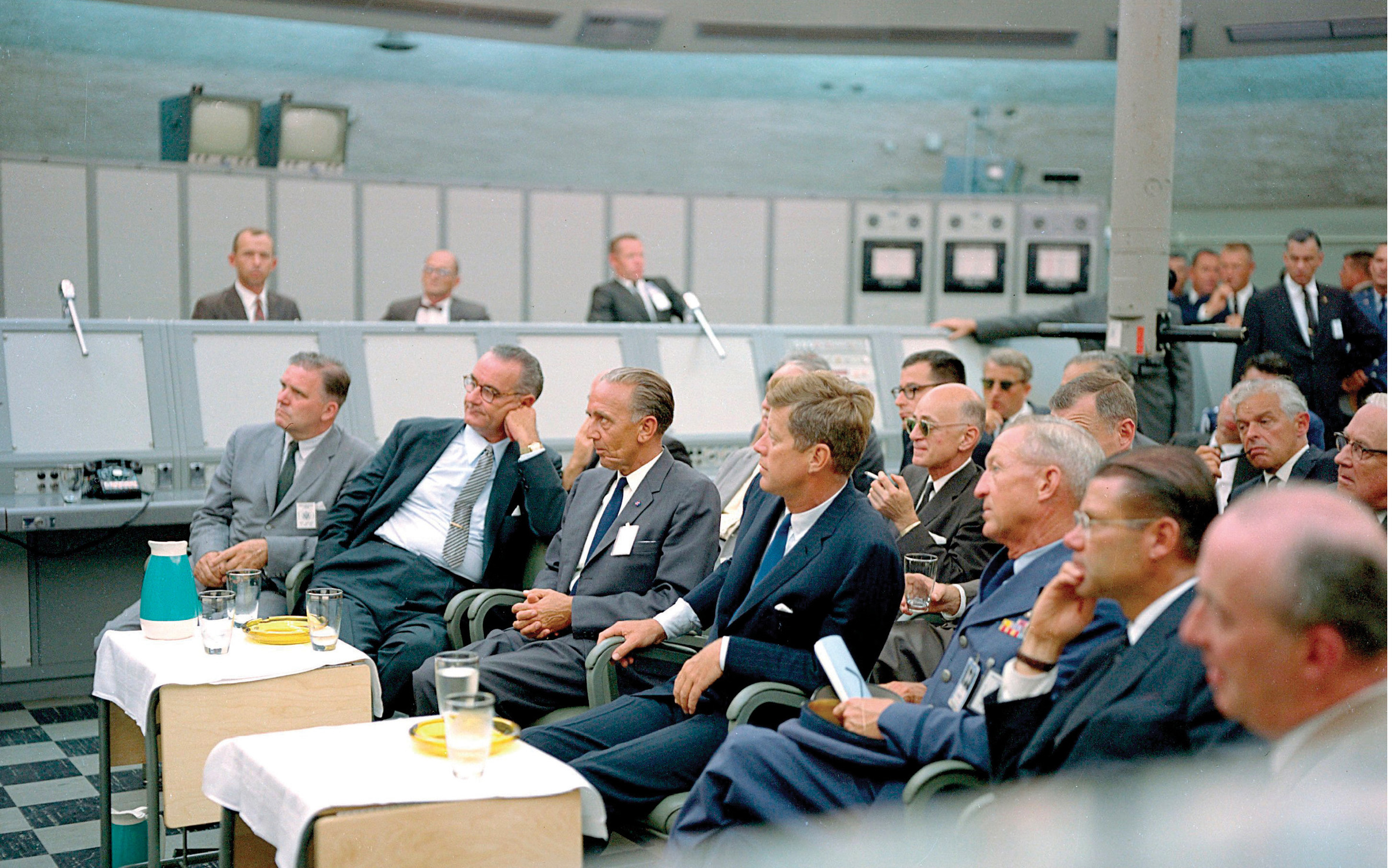
President John F. Kennedy attends a briefing during his September 1962 tour of Cape Canaveral. Sitting with him in the front row are NASA Administrator James Webb, Vice President Lyndon Johnson, Director of Launch Operations Kurt Debus, and Secretary of Defense Robert McNamara.
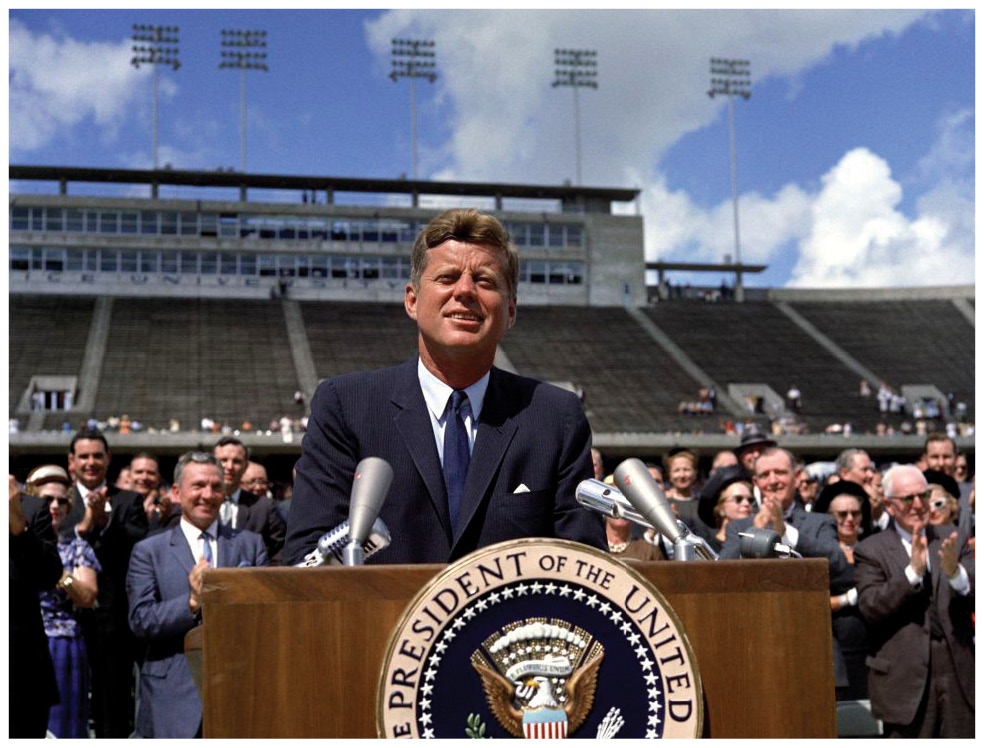
“We choose to go to the Moon in this decade and do the other things, not because they are easy, but because they are hard; because that goal will serve to organize and measure the best of our energies and skills, because that challenge is one that we are willing to accept, one we are unwilling to postpone, and one we intend to win.” President John F. Kennedy at Rice University in 1962.
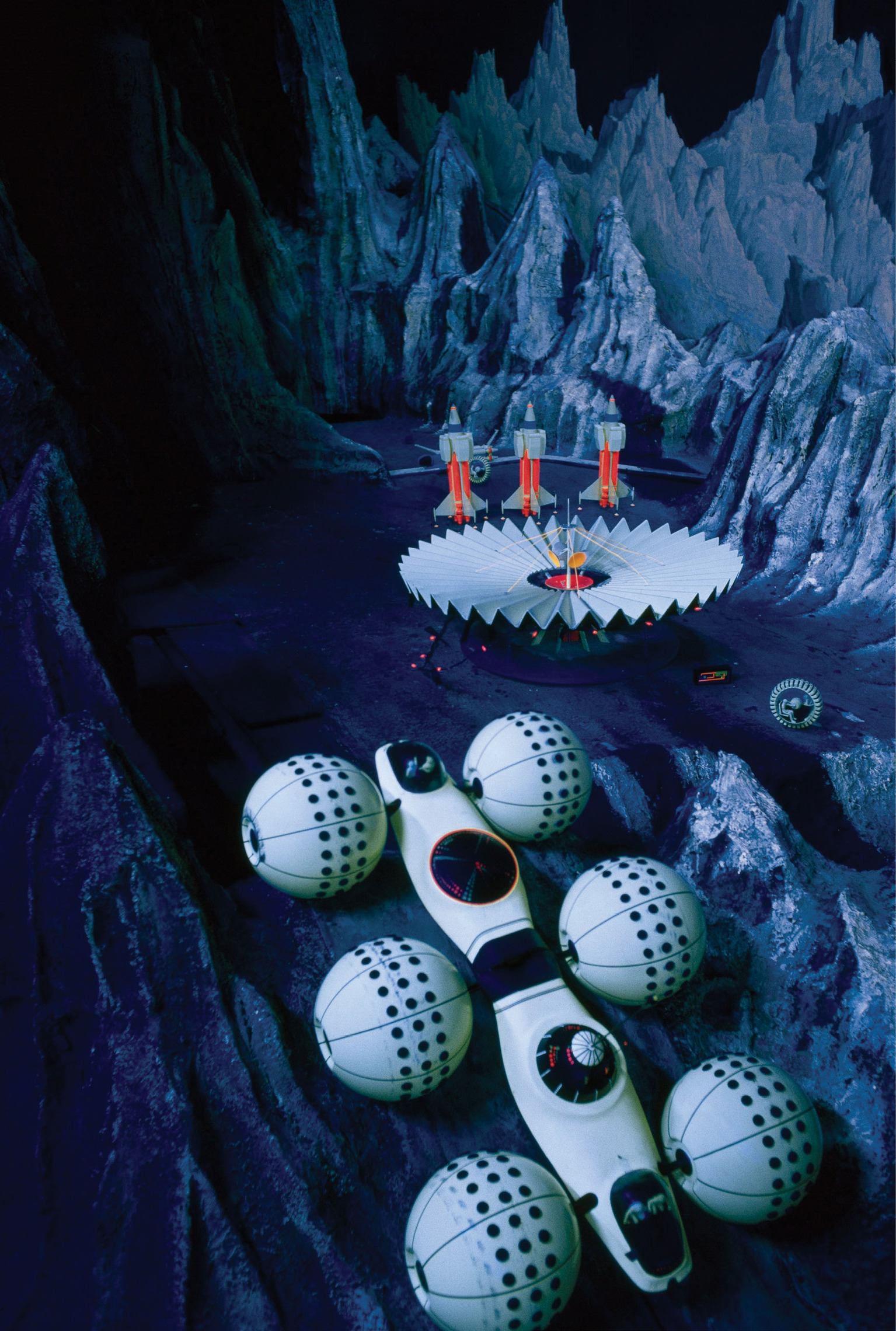
A human settlement on the Moon in the year 2024, presented as part of General Motors’ Futurama exhibit at the 1964–1965 New York World’s Fair.
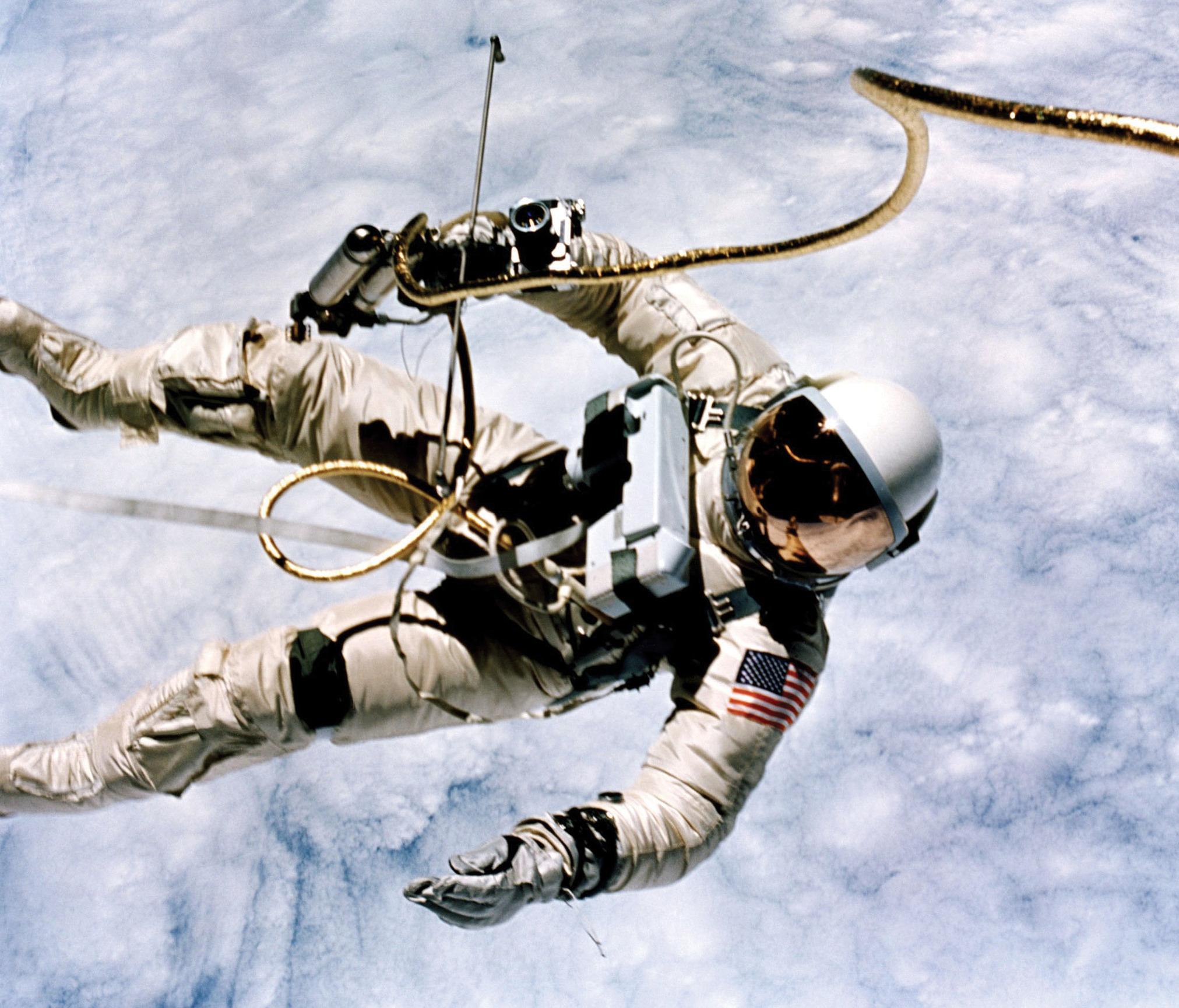
Astronaut Ed White becomes the first American to walk in space during the June 1965 Gemini 4 mission. He and James McDivitt were the first NASA astronauts to prominently display the American flag on the shoulder of their space suits.
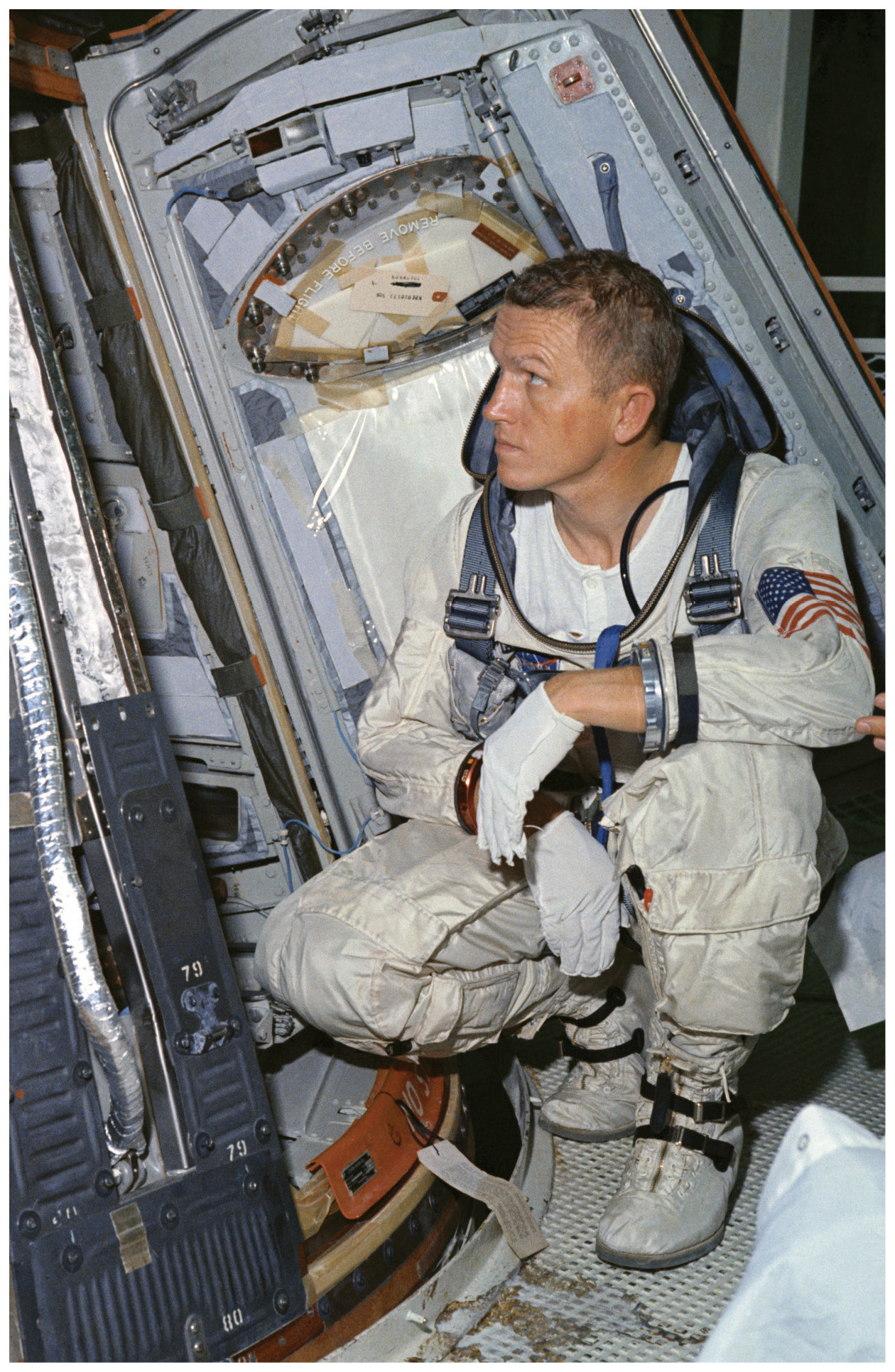
Astronaut Frank Borman prepares for Gemini 7 in 1965. A medical endurance mission, the flight would transport Borman and Jim Lovell on 206 orbits around the Earth during nearly fourteen days. Onboard was a paperback of Mark Twain’s Roughing It, but Borman never had enough free time to read more than two chapters.
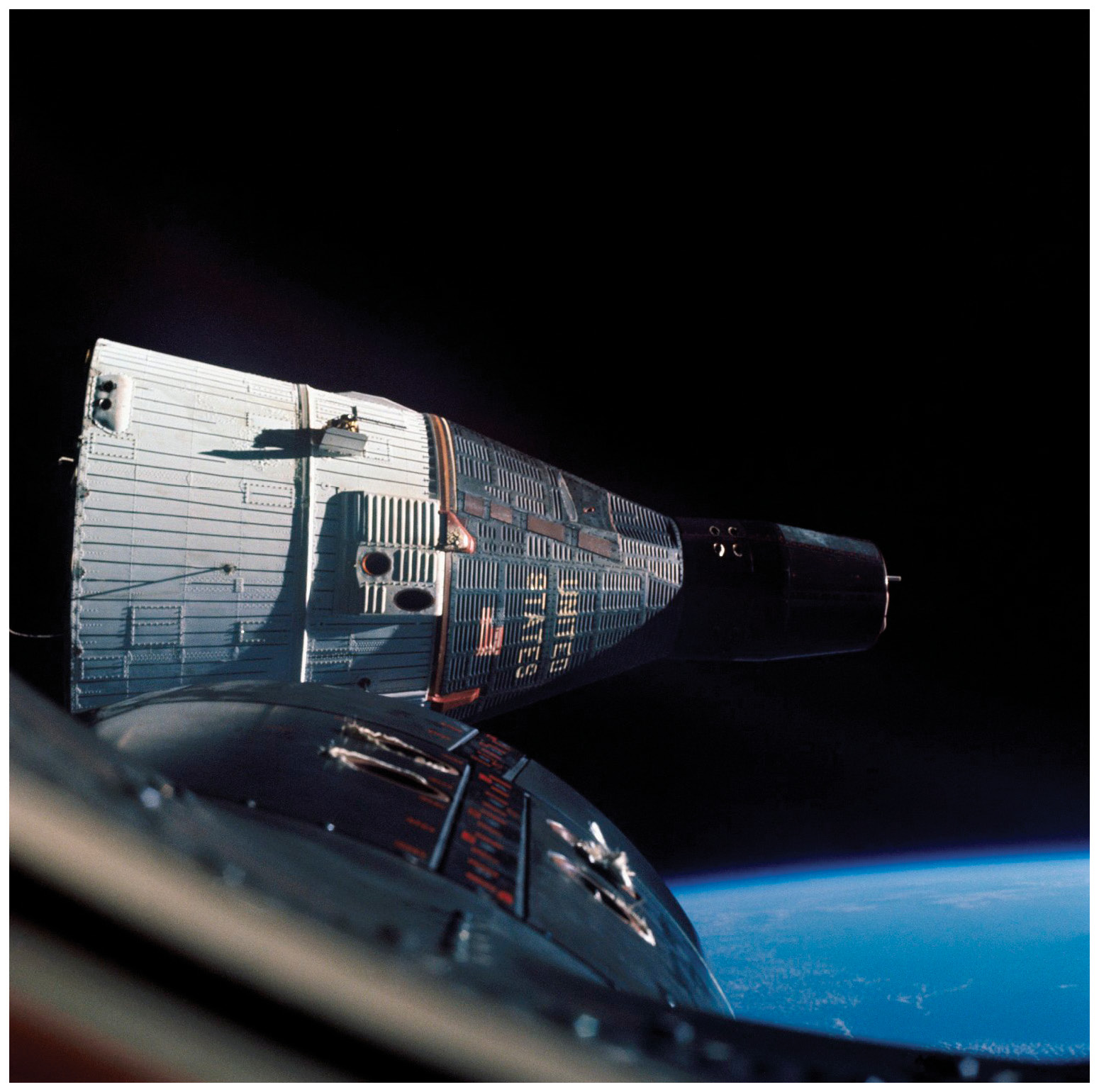
Gemini 7 photographed from Gemini 6A during the first close rendezvous in space, December 1965. “It was like the Blue Angels at 18,000 miles per hour,” said Gemini 6A’s commander Wally Schirra. “I did a fly-around inspection….I could move to within inches of it in perfect confidence.”

Gemini 8 astronauts Neil Armstrong and David Scott wait to board the USS Leonard F. Mason after their emergency return from orbit. The original flight plan called for them to splash down in the Atlantic Ocean, but a secondary recovery area in the Pacific Ocean 500 miles east of Okinawa was chosen instead.
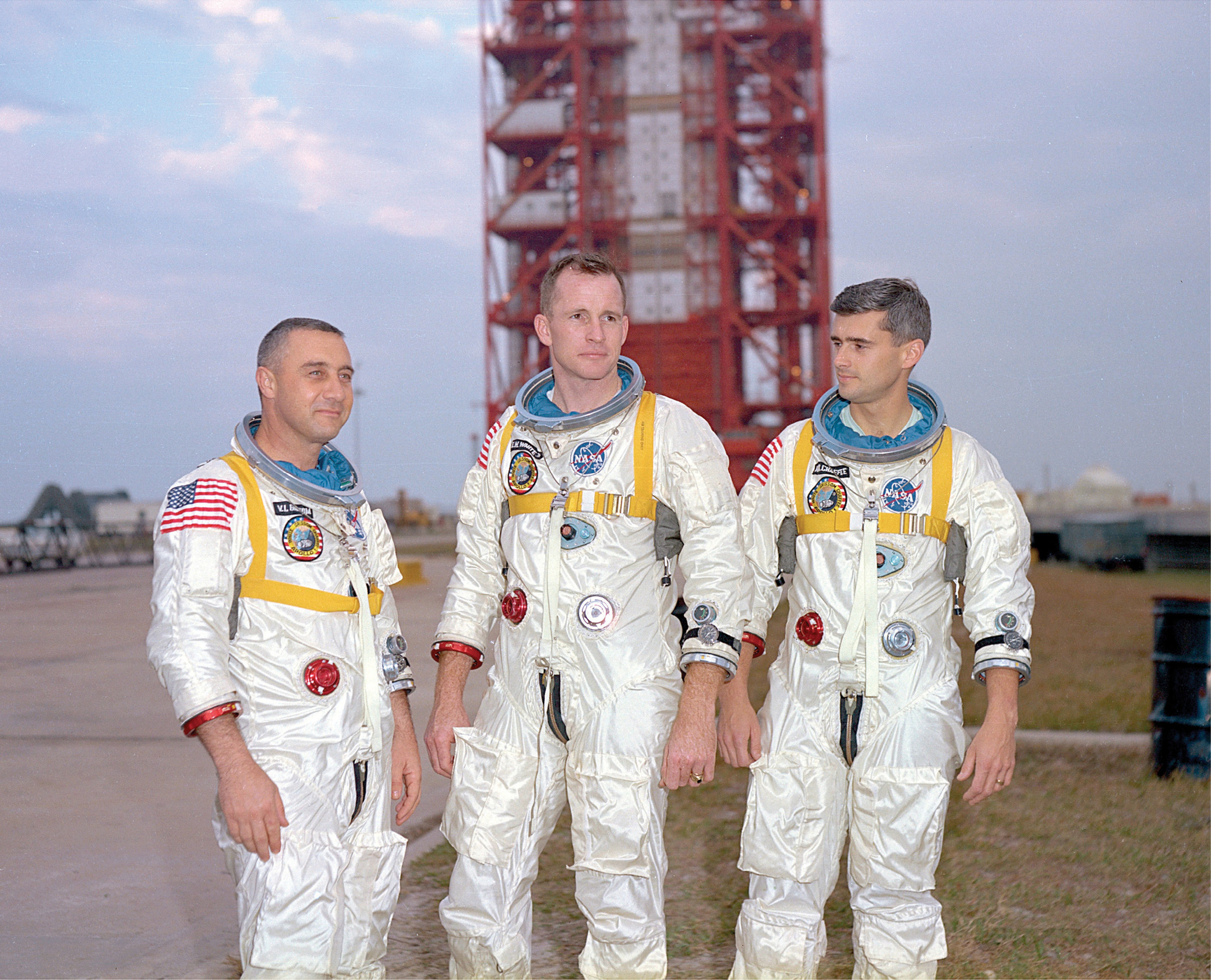
The crew of Apollo 1, Gus Grissom, Ed White, and Roger Chaffee, photographed near Pad 34 in January 1967, days before they were killed when a fire spread through the oxygen-rich atmosphere of their enclosed spacecraft.

The launch of the first Saturn V moon rocket on November 9, 1967. The creation of von Braun’s rocket team at the Marshall Space Flight Center in Huntsville, the Saturn V flew thirteen missions, ten with people on board.

With a neighbor providing support, Susan Borman (right) watches the ABC News coverage of the launch of Apollo 8. Her faith in the space program shaken after the Apollo 1 fire, she believed it unlikely her husband would return from the first trip to the Moon.
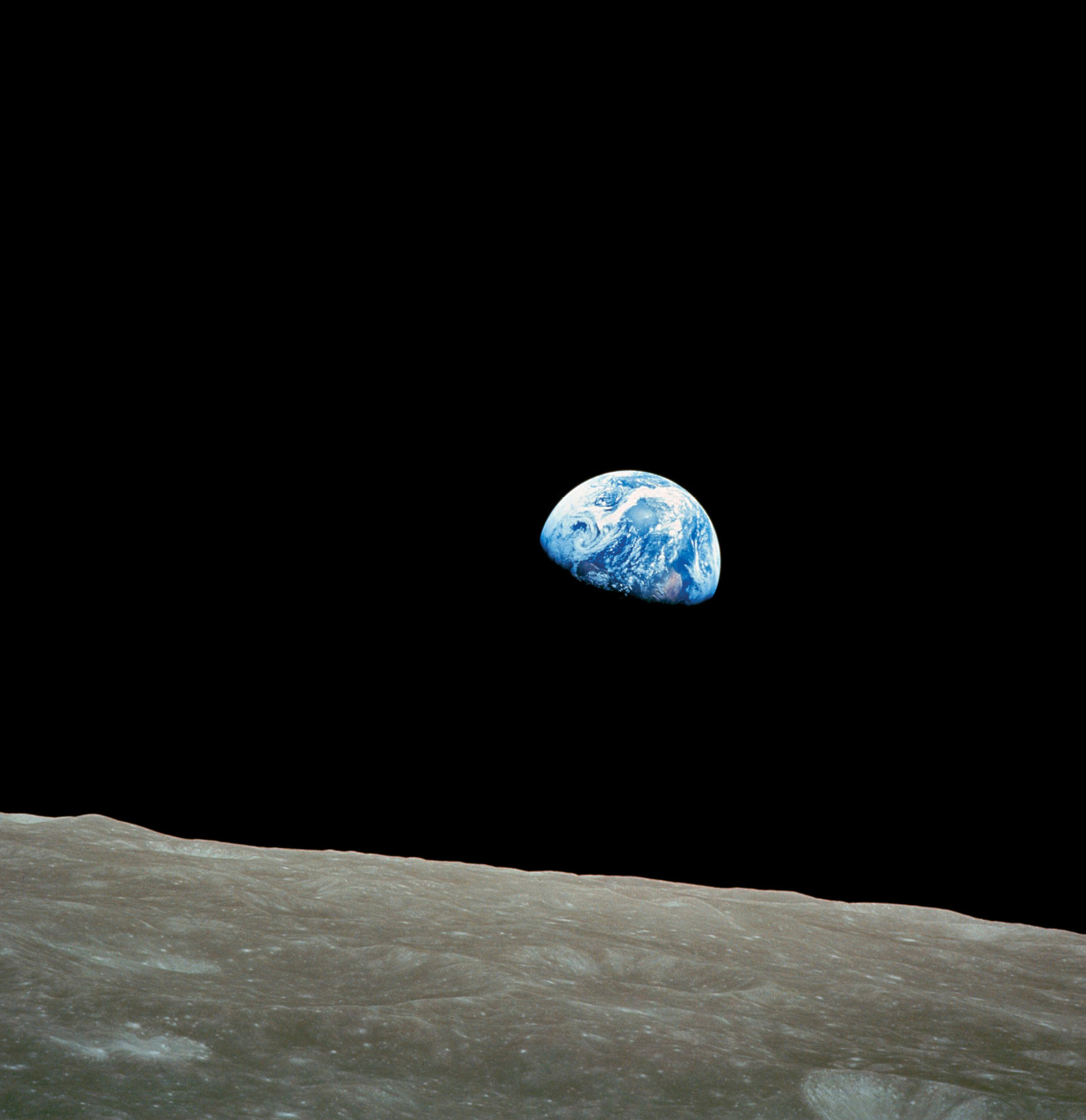
“Hey, don’t take that [photograph]. It’s not scheduled.” One of the most famous images of the twentieth century was the result of a lucky accident. Known as “Earthrise,” this single photograph was worth the cost of the entire Apollo program, said anthropologist Margaret Mead.

Neil Armstrong waves to the press as he leads the crew of Apollo 11 to the van that will transport them on the ten-mile journey to Pad 39A. It was 6:27 on the morning of July 16, 1969. An observer standing a few feet away likened it to “seeing Columbus sail out of port.”
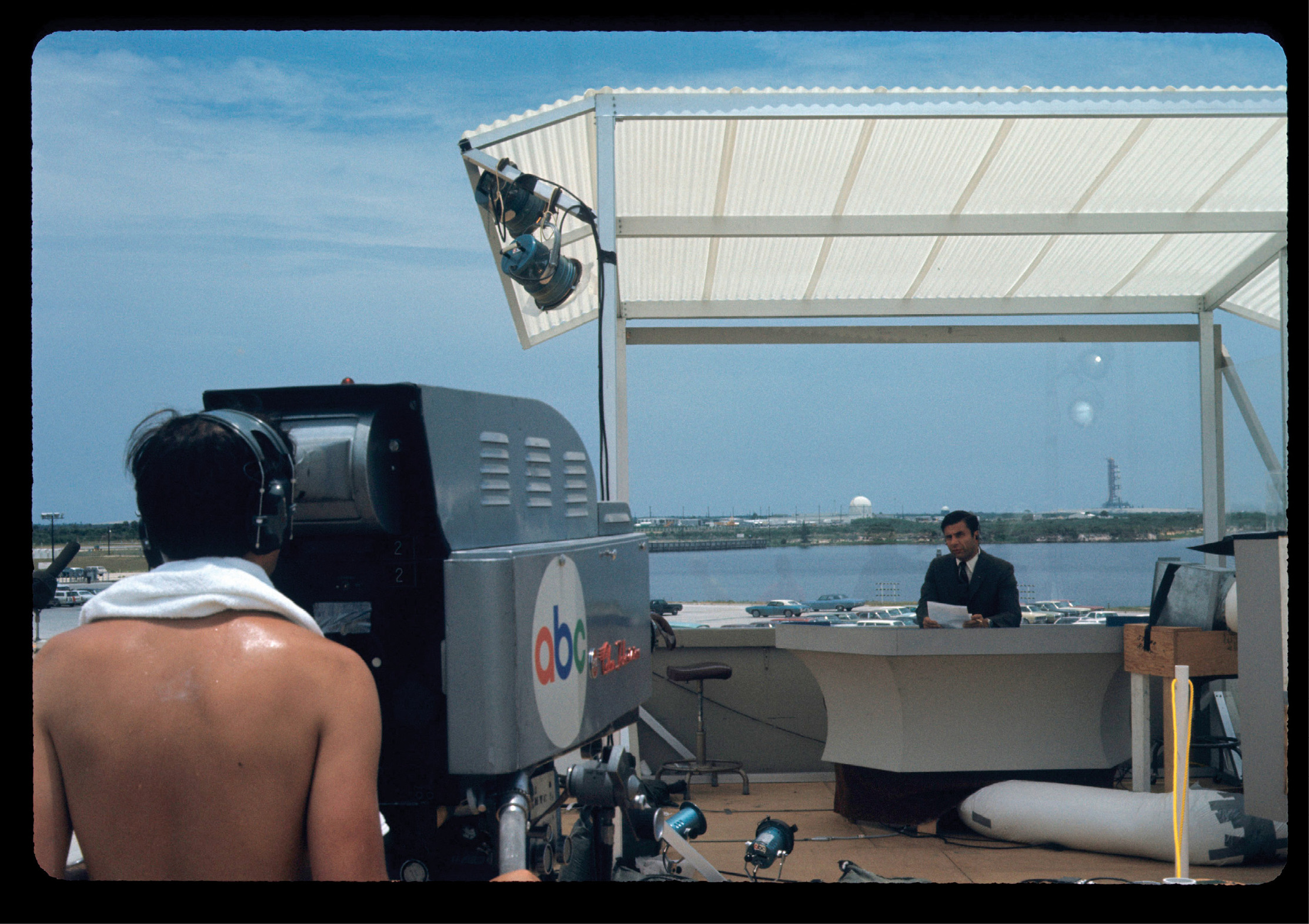
From the press site located three miles from Pad 39, ABC News science editor Jules Bergman reports during the live television broadcast of the launch of Apollo 11. The weather that morning was very humid with temperatures already heading into the high 80s.
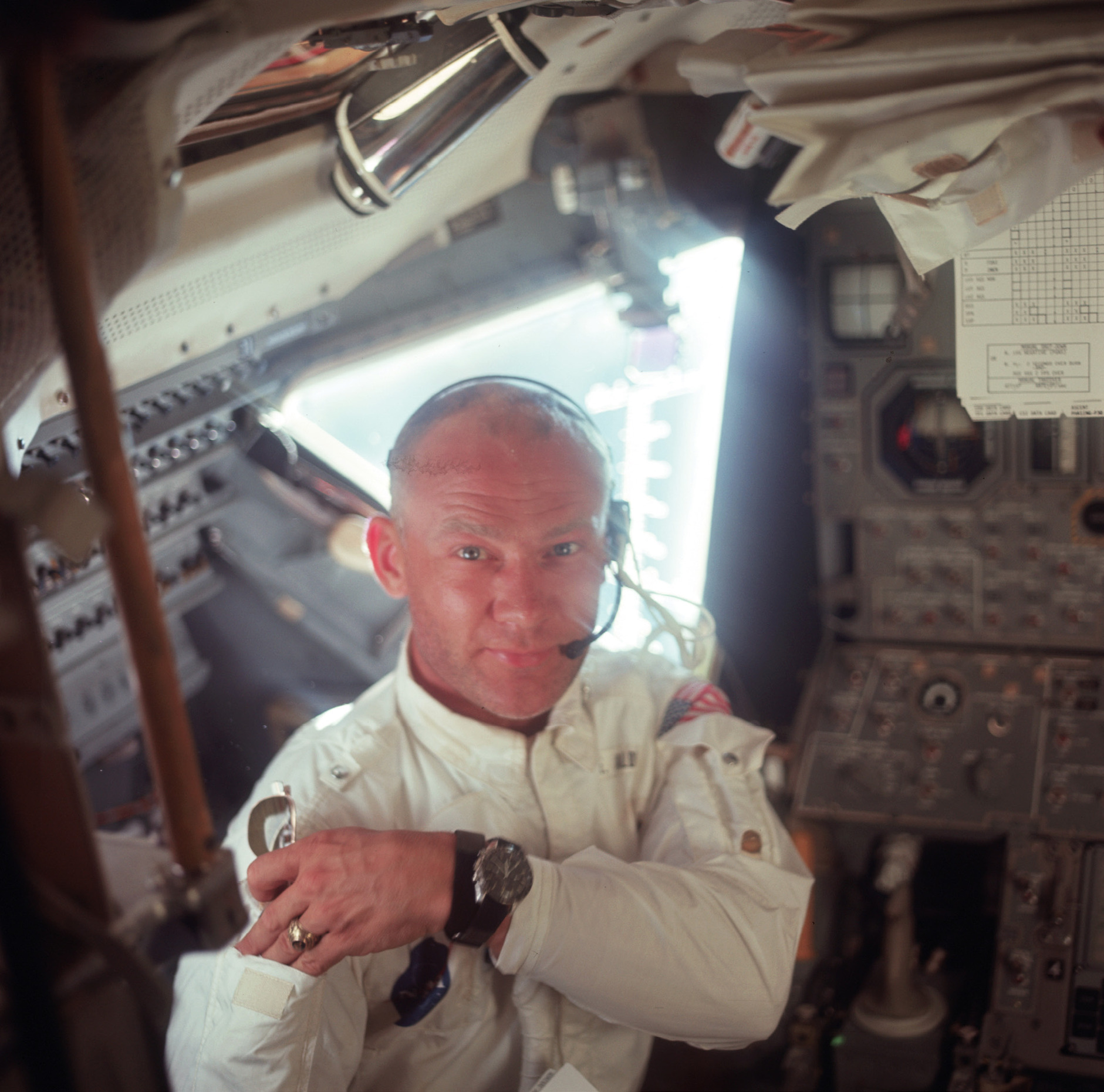
Prior to the lunar landing, Buzz Aldrin checks out the lunar module while it is still docked to the command-and-service module.

Neil Armstrong photographed in the lunar module after landing on the Moon.
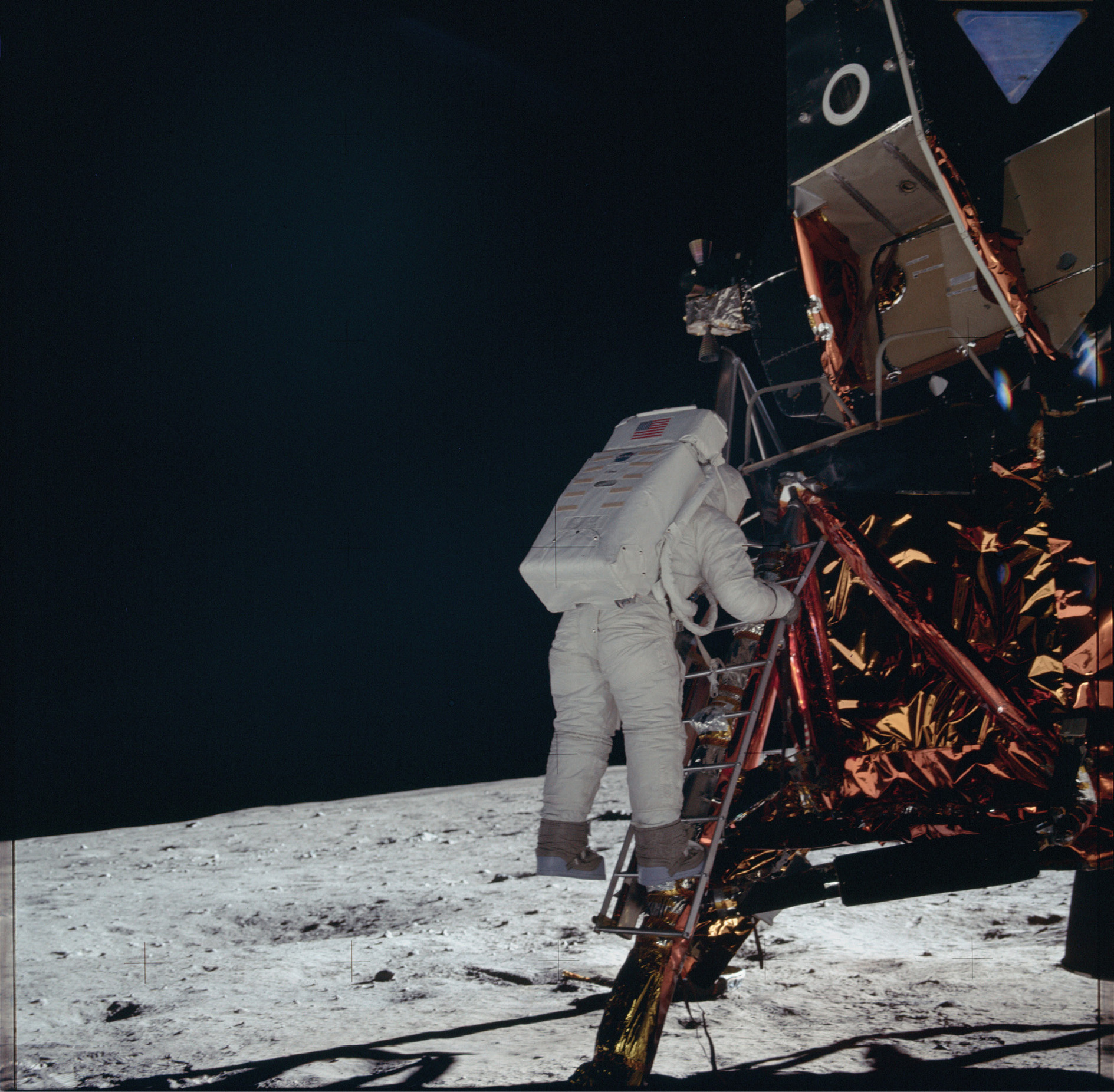
Buzz Aldrin descends the lunar module ladder. NASA scientists contemplated the remote possibility that energy stored in the lunar surface particles might set off a combustible reaction when it came into contact with the astronauts’ boots. For that reason Armstrong was told to touch the surface lightly with his heel during his first step.

Aldrin deploys a seismic experiment package during the moonwalk. Less sophisticated than later nuclear-powered Apollo seismometers, this solar-powered device operated for less than a month. It was so sensitive that it picked up the motions of Neil Armstrong turning over in his sleep within the lunar module following the moonwalk.

The iconic image of Aldrin on the lunar surface, with Neil Armstrong reflected in the mirrored visor. Because Aldrin was assigned to take photographs of the landscape and the condition of the lunar module, there are few good images of Armstrong standing on the Moon.